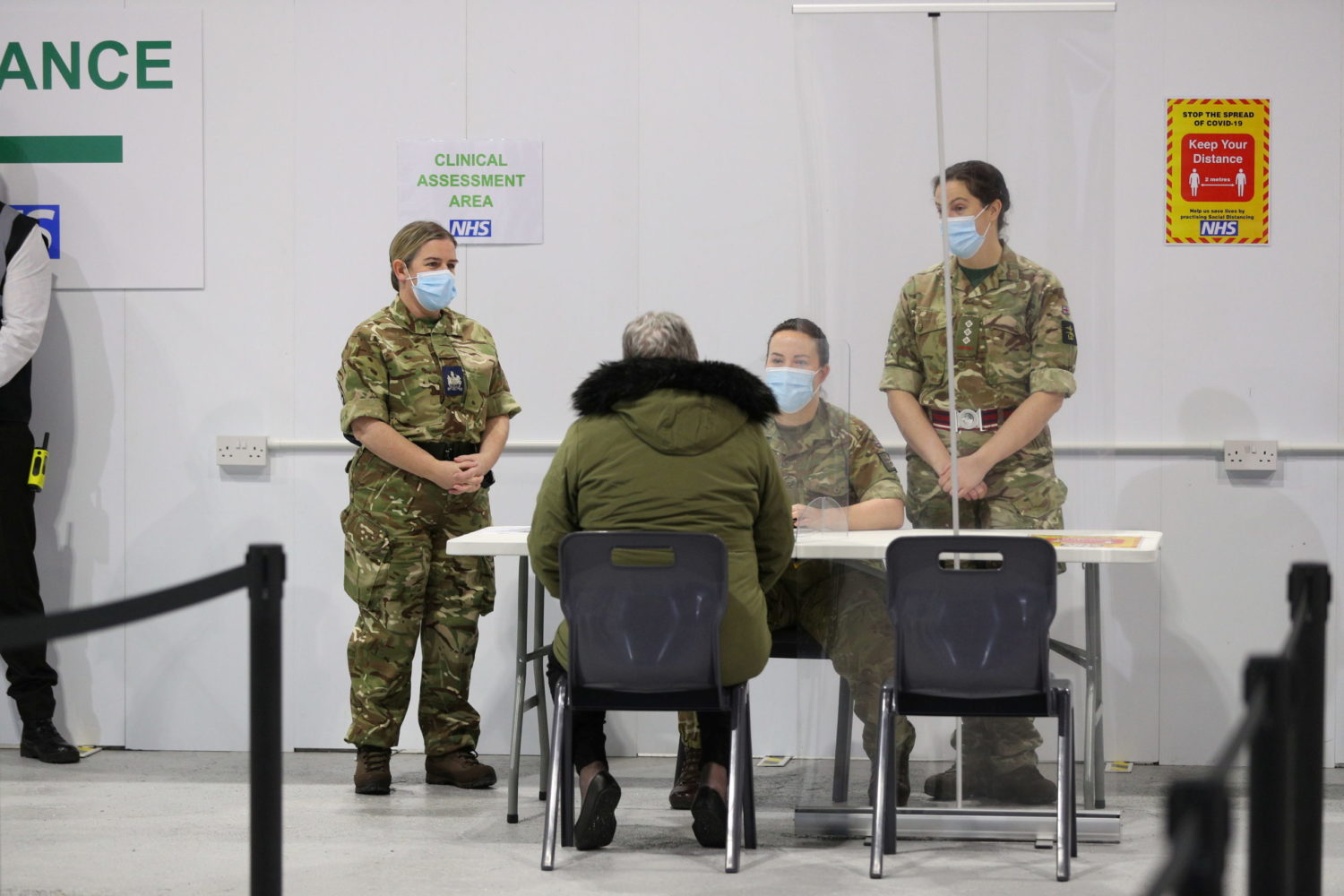
By Lucia Mutikani
WASHINGTON (Reuters) – U.S. economic growth accelerated in the first quarter as the government gave money to mostly lower-income households, fueling consumer spending and setting the course for what is expected to be the strongest performance this year in nearly four decades.
The government largesse also extended to businesses, especially in the high-contact services industry. The massive fiscal stimulus and easing anxiety over COVID-19, with all adult Americans now eligible for vaccination against the virus, have resulted in a faster economic rebound in the United States compared to its global rivals.
The second-fastest gross domestic product growth since the third quarter of 2003, reported by the Commerce Department on Thursday, left output just 0.9% shy of its level at the end of 2019. Economists expect a full recovery from the pandemic recession, which started in February 2020, in late 2023.
The report is a boost for President Joe Biden as he celebrated 100 days in the White House.
“In early 2021, the economy was served a strong cocktail of improving health conditions and rapid vaccinations along with a fizzy dose of fiscal stimulus and a steady flow of monetary policy support,” said Lydia Boussour, lead U.S. economist at Oxford Economics in New York. “Looking ahead, we foresee the economy’s spring bloom turning into a summer boom.”
GDP increased at a 6.4% annualized rate last quarter, the government said in its advance estimate for the first three months of the year. That followed a 4.3% growth rate in the fourth quarter. It was the biggest first-quarter increase in growth since 1984.
Economists polled by Reuters had forecast GDP growth would increase at a 6.1% pace in the January-March period.
Income at the disposal of households before accounting for inflation surged by a whopping $2.36 trillion after decreasing $402.1 billion in the fourth quarter. As result, consumer spending jumped at a 10.7% rate, boosted by purchases of motor vehicles, furniture, recreational goods and electronics. Consumers also dined out, stayed at hotels and gambled.
Consumer spending, which accounts for more than two-thirds of U.S. economic activity, grew at a 2.3% pace in the fourth quarter. Some of the stimulus money was stashed away, with savings ballooning to $4.12 trillion from $2.25 trillion in the fourth quarter. Economists estimate households have accumulated at least $2 trillion in excess savings during the pandemic.
The government has provided nearly $6 trillion in COVID-19 relief over the past year. Robust demand in the first quarter pushed against supply constraints, leading businesses to draw down inventories, limiting the rise in GDP growth.
Excluding inventories, government and trade, the economy grew at a 10.6% rate last quarter.
The rapidly accelerating growth could revive fears about the economy overheating. The Federal Reserve on Wednesday acknowledged the burgeoning domestic activity, but the U.S. central bank gave no sign it was ready to reduce its extraordinary support for the recovery.
The booming economy could also erode support among moderate Democrats for Biden’s ambitious economic agenda. Biden on Wednesday unveiled a sweeping $1.8 trillion package for families and education in his first joint speech to Congress. Republicans oppose more stimulus, now worried about swelling debt. The new package and an earlier infrastructure and jobs plan total around $4 trillion, rivaling the annual federal budget.
“The second quarter will be hotter, people have money to spend as they are able to go shopping and traveling again,” said Sung Won Sohn, a finance and economics professor at Loyola Marymount University in Los Angeles. “Production is being ramped up to rebuild inventories. President Biden and (Fed) Chairman (Jerome) Powell, do we need all the stimuli?”
U.S. stocks were mostly higher. The dollar was steady against a basket of currencies. U.S. Treasury prices fell.
POWERFUL MOMENTUM
Inflation has accelerated, but many economists, including Fed officials, expect it will be transitory as the labor market remains 8.4 million jobs below its peak in February 2020.
The labor market is gradually recovering. In a separate report on Thursday, the Labor Department said initial claims for state unemployment benefits fell 13,000 to a seasonally adjusted 553,000 during the week ended April 24.
While claims have dropped from a record 6.149 million in early April 2020, they are above the range of 200,000 to 250,000 that is viewed as consistent with a healthy labor market.
There were 16.6 million people receiving unemployment benefits in the first week of April.
“We’re still probably a couple years away from pre-pandemic employment levels, but based on the powerful economic momentum built up in the first quarter, we should return close to a fully-functioning economy in the second quarter,” said Robert Frick, corporate economist at Navy Federal Credit Union in Vienna, Virginia.
Economists forecast growth this year could top 7%, which would be the fastest since 1984. The economy contracted 3.5% in 2020, the worst performance in 74 years.
Growth in the first quarter was also driven by business spending on equipment, which posted a third straight quarter of double-digit expansion. But business investment in nonresidential structures fell for a sixth straight quarter as a rebound in mining exploration, shafts and wells was offset by a drop in commercial and healthcare buildings.
Residential investment contributed to GDP growth for a third straight quarter. But trade was a drag for the third consecutive quarter as some of the domestic demand was satiated with imports. Inventories were drawn down at a rate of 85.5 billion.
(Reporting by Lucia Mutikani; Editing by Chizu Nomiyama and Paul Simao)












